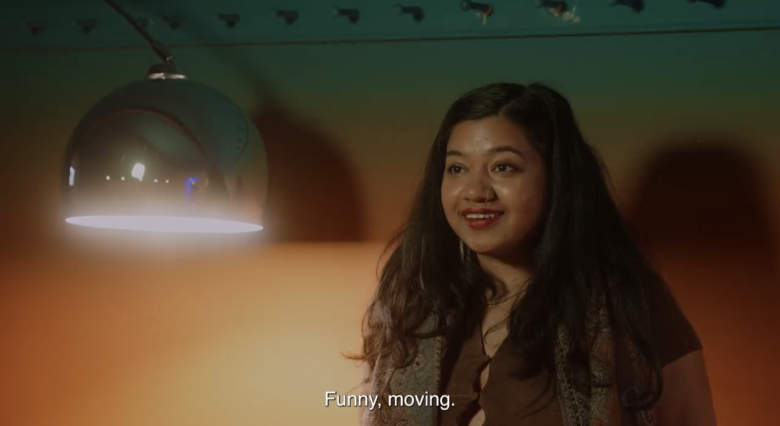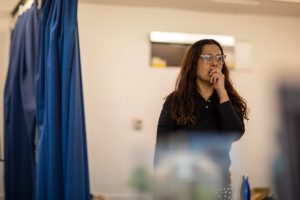Tell us about yourself and your creative practice.
I’m Tasnim, a queer Bangladeshi-British woman from East London and I am a visual artist, theatremaker and writer. I am Assistant Producer/Director for Daedalus Theatre Company.
What does queer ecology mean to you?
I don’t do very well with long words haha but after spending a week unpacking and consistent Googling I would say queer ecology describes a critical, intersectional and decentralised approach in the way we look at how people, plants, animals and smaller organisms interact with their environment, both locally and globally.
What did you discover about yourself and the way you work during the Dysbiosis R&D week?
I discovered that I really thrive in pressured creative environments bouncing ideas of creatives from different disciplines. It dawned on me that to pursue a project you don’t need to have it all figured out, having an idea is good enough. I never knew I could work with venues this way, the way Paul was doing, to say hey I have an idea and I want to bring along a bunch of people that I’ve never met from different creative disciplines in a rehearsal room at your theatre and see what happens.
I discovered how valuable space was to change and focus my mindset and to inspire and nourish me. As a freelancer I work from my backpack moving place to place without a studio of my own. I have a small desk in my room that often becomes cluttered and a place where the last thing I usually want to do is sit down and be creative.
A key inspiration during the R&D week?
Inglorious Empire by Shashi Tharoor and an Australian dance company, Bangarra.
What has stayed with you from your research into queer ecology?
I found it interesting how all of us with our different backgrounds came back to mythology, folklore or fantasy to creatively express that huge word “nature”. In an age of science where spirituality has largely been confined to organised religions it is interesting to me that when we think of nature we oppose it with science still which is a binary way of thinking, and so associate the unexplained and intangible with nature. It may explain our yearning for going back to a world of feeling and magic and an alienation from a world of bureaucracy and order. We looked at other cultures which spoke a deeper and more natural affinity with nature that our urban lives in London where we all find ourselves to be, and they did come across as mythical to us, reminiscent of another time that is surely lost.
What are you currently excited about creatively?
I’m excited to see how we can engage young people and the wider community with our project Dysbiosis. I enjoy the challenge of figuring out how a story can land in different places. To get there we need to find out what our collective story is in response to Dysbiosis without the structure of the piece overwhelming the individual strands of our contributions. We currently have an idea about creating a display with young people that can be placed in a public space so that we can engage more people to question what their own relationship is with nature and the part we play as a society in the global environment.



